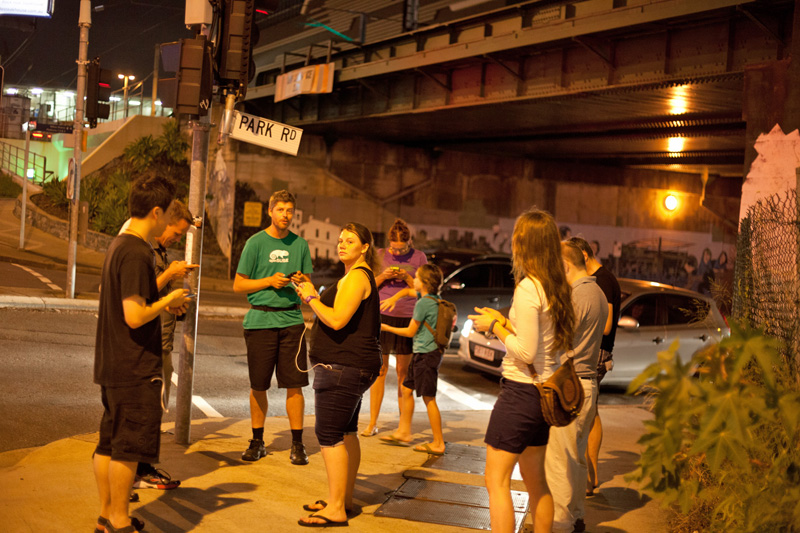CNET story: ‘Ingress: The Friendliest Turf War on Earth’, February 2015
A feature story for CNET; excerpt below.
Ingress: The Friendliest Turf War on Earth
We embed in the field and go behind the scenes of Google’s augmented reality game, Ingress. Is walking through the streets of hundreds of countries the future of gaming?
Eleven of us gather deep in the enemy heartland on a balmy Sunday evening to partake in Operation: Green Court. Meeting in secret, we are agents of the Enlightened, a faction which seeks to advance society through our actions. The enemy will be unaware of our presence until we begin attacking and capturing a long corridor of their prized portals, flipping them from blue to green while figuratively flipping them the bird. Our movements must be coordinated and efficient, as it won’t be long before we attract the attention of the Resistance, the opposing faction which fears change and seeks to crush our idealism and progress.
In actuality, we are 10 adults and one child meeting on a street corner to bond over our smartphones — specifically, an app called Ingress, a free-to-play augmented reality game that has been downloaded over 8 million times and is being played in more than 200 countries.
The massively multiplayer mobile game encourages its players to walk around the real world, using data overlaid atop Google Maps to attack and defend real-world public locations known as “portals”. Our common goal for this operation is to turn the suburb green — the colour of the Enlightened, and the colour of the shirt of Aladrin, the 39 year-old agent who arranged this operation via Google+ earlier in the week.
Milton — an inner-city suburb of Brisbane, Australia — is usually coated in blue, thanks to the dedicated efforts of its Resistance population, many of whom work at nearby IT firms. Our own neighbourhood, just across the Brisbane River, is firmly green-held, but on this Sunday night we’ve set out to ruffle a few blue feathers. Owing to their team colour, Resistance players are commonly referred to as “Smurfs”. The Enlightened tend to self-identify as “frogs”.
Among the eleven of us is Apocs85, a dedicated level 15 agent who is widely known and respected as the unofficial guardian of Brisbane’s West End. The 29-year-old loves his day job of testing video games, and his Ingress statistics show that he has walked 118 kilometres (73 miles) in the last week while defending and rebuilding portals throughout the inner-city.
Niantic’s ‘success failure’
In-game action is shown on our smartphone screens, which act as “scanners” to reveal the portals located all around us. They’re invisible to the naked eye, but with Ingress loaded on our Android or iOS devices, we’re able to see portals attached to structures, artwork, historic locations and buildings of cultural significance — train stations, public parks and post offices are three common examples.
The portal locations are user-submitted and manually checked by staff at Niantic Labs, the game’s Google-owned developer, to ensure their accuracy and suitability. Globally, more than 3 million such locations have been approved so far, in numbers far greater than expected when the game was first released as a public beta version in November 2012.
“At Google, we call that a ‘success failure’,” says Niantic Labs founder John Hanke with a chuckle. “It’s a failure because it’s so successful: lots of people submitted portals, which is great, but now it’s more than we can really handle to keep the response time down.”
To read the full story, visit CNET.
